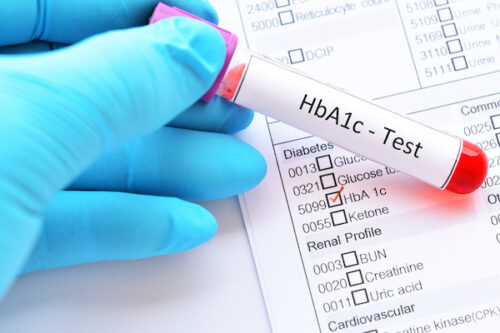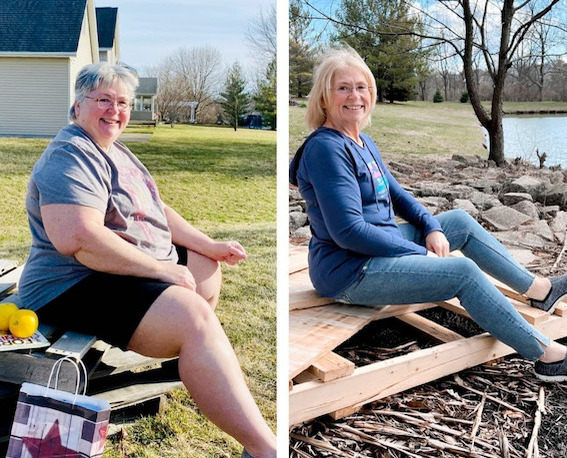Further Discussions on the Use of Fosamax for Osteoporosis
My April 2008 newsletter carried an article, Patients Commonly Receive Misinformation on Osteoporosis Treatments by Gillian Sanson who is a woman’s health educator and researcher in Auckland, New Zealand and the author of several books, including The Myth of Osteoporosis. I would like to continue this discussion beginning with a response from Jerry Donnelly, D.M.D of a men’s osteoporosis support group, maleosteoporosis.org. Following Dr. Donnelly’s concerns is a reply from Ms. Sanson. For my thoughts on this subject see my Hot Topics on osteoporosis:
May 1, 2008
Dr. McDougall,
I’m disappointed in the information in the latest newsletter regarding osteoporosis and Gillian Sanson’s letter you printed. Osteoporosis, and bisphosphonates for its treatment, is a complex medical problem often fraught with misinformation that doesn’t make it easier for people to sort facts from fiction. Sanson’s article, which could have been good, adds more misinformation. I’m particularly bothered by her cherry picking a few articles, particularly older ones, and then selecting sentences here and there to present her case without also covering other facts presented in the articles, or elsewhere. I do agree on all but one topic, which I’ll discuss below, regarding what she says in the last segment about over-treating individuals who don’t have frank osteoporosis, but that seems to get lost because of the faultiness of other information in the letter.
It is very confusing to say, ‘They [bisphosphonates] do not re-build bone, . . .’ Exactly what do they do then? They certainly allow the body to rebuild bone, while not doing it themselves, but what is the difference? If my T-score was -2.5 (I had lost 25% of my bone density) when I first started taking Fosamax and it is now normal, is she saying there is no new bone? Bisphosphonates work because they prevent the breakdown of bone by interfering with osteoclasts. They have no effect on osteoblasts which continue to build bone. This gives a net effect of increased bone build up compared to pretreatment levels because the body can form more bone. If this is not rebuilding bone, what is it?
To say the anti-fracture benefit is minimal and then cite an eight- and a ten-year old study is not good science. There are too many subsequent studies showing the benefit of bisphosphonates on fracture reduction for me to cite. But I will give you two that show rather effectively that, not only do the bisphosphonates reduce fracture risk, they do it in proportion to how well the individuals adhere to the prescribed bisphosphonate dosing regimen. [To see any studies I cite, go to PubMed and paste in the numeric portion of the PMID] See PMID: 17999022 for a study by Rabenda V and others in Osteoporosis International in November 2007. In summary this study showed that individuals who took their medications as they were expected to had a 60% reduction in fracture risk compared to those who did not follow dosing regimens and didn’t properly take their medications. Note that the poorest compliance was among women taking the 5-mg daily alendronate and that greater compliance occurred when the 70-mg once-weekly dosing was used. Note also that the two studies Sanson cites regarding fracture efficacy were done when the only dose available was 5-mg daily. Even so this dosage was shown to be effective in preventing fractures, particularly in individuals with true osteoporosis, as would be expected.
Another study showing the effectiveness of fracture reduction when patients complied with recommended dosing levels was done by Siris ES and others in Mayo Clin Proc in 2006, PMID: 16901023. They found significantly fewer fractures at 24 months when compliance rates were above 50%, and particularly when 75% or greater. Note that in some studies compliance rates have been shown to be approximately 39%.
Once again for her citation on fracture reduction she recites the 12-year-old article by Black DM and others while ignoring 12 years of other articles on this topic. I’m sure she is aware of this, but her readers may not be. Any medication taken for osteoporosis is going to have a limited fracture reduction ability. If an individual with, e.g., 25% reduction in bone mineral density (BMD) never falls, that person will most likely never fracture. Those who will, however, expect to benefit are those who have regained BMD and who also happen to fall. If there were a way to know in advance exactly who would fall and who wouldn’t fall we’d never need medications except for those with the most severe BMD loss. Unfortunately, no one has figured out how to predict falls yet, so we have to give the medications to all those at risk to prevent fractures in the few who do fall.
The information Sanson provides regarding brittle bones is extremely weak. The article that Dr. Ott writes her editorial about cited 9 older individuals, 3 of whom were also on estrogen and 2 of whom were on glucocorticoids. Considering the millions of individuals who have taken Fosamax, I certainly don’t find these numbers alarming, and don’t think any good scientist would pay them much heed without further evidence of the microfracturing problem. Additionally she cites an article regarding beagle dogs in which the authors note, ‘The doses of these bisphosphonates were six times the clinical doses approved for treatment of osteoporosis in humans.’ To cite that article and not mention that these animals were given six times the normal human dose is quite deceptive.
To cite a lawsuit in progress with absolutely no scientific evidence for any of the statements by the plaintiff is also deceptive. I’m taking Fosamax and noticed that my food didn’t taste as good today, can I sue Merck and blame Fosamax and have that cited as a side effect of Fosamax? Come on!
Sanson states that there is only one long-term study on bisphosphonates, but this is incorrect. There is also a 7-year study for risedronate. See PMID: 15455188 for the study by Mellstrom DD and others in Calcif Tissue Int in 2004.
In her final sentence she mentions regular exercise and appropriate diet to maintain bone health. I’m a vegan now and follow your plan as much as I can. I was also mostly vegetarian when I was diagnosed with osteoporosis and I was active duty Army doing a regular exercise regimen of aerobic and nonaerobic exercise for the previous twenty years which didn’t protect me from osteoporosis. I’m aware of no clinical trial showing that any diet and exercise regimen is effective in treating, especially postmenopausal osteoporosis, or any other form of osteoporosis either.
Sanson is bothered by what she considers as too great an emphasis on the positive for bisphosphonates and not enough emphasis on the negative. She, in my opinion, suffers from having the exact opposite overemphasis on the negative aspect of bisphosphonates without giving them enough credit for their beneficial actions. Reality is somewhere between these two levels, and that is what I think your readers should know.
Bisphosphonates are certainly not the ideal medication that I would suggest for anyone with osteoporosis, but there are few alternatives at this point especially for men, and there were none in 1995 when I was diagnosed with osteoporosis. The Sanson letter never mentions men who comprise about 20% of those with osteoporosis, and she suggests no real options that have been shown effective in controlled clinical trials at regaining BMD for individuals with osteoporosis. To criticize that which has been shown effective at treating osteoporosis, albeit with some side effects, and offer no proven alternative to regain lost BMD, is not doing your readers a service. I’ve suffered vertebral compression fractures before I started Fosamax with none since. I also don’t want more, or worse, a hip fracture. Thus I’m forced to stay with Fosamax, its side effects notwithstanding, until someone provides me with a safer clinically proven alternative to retain my currently normal BMD. I suspect many other men and women are in the same category.
Regards,
Jerry Donnelly, D.M.D (Doctor of Dental Medicine?)
Reply fom Gillian Sanson
May 4, 2008
Dear Dr Donelly
I appreciate the comments raised in your email of May 1st. It is the lack of information and widespread misinformation about osteoporosis diagnosis, prevention and treatment that concerns me also. However, rather than being polemic as you suggest, I believe I offer an evidence-based perspective that goes some way to redress the imbalance of information generated by an uncritical media, commercial influence in the reporting of clinical trials, and direct-to-consumer advertising of pharmaceuticals – all of which could be accused of ‘cherry-picking’ the research and selectively educating the public.
In my experience, consumers and doctors like to know as much as possible about potential benefits, side-effects and risks of treatments in order to better consider the pros and cons of embarking on treatment. It is also very helpful to understand medical concepts like numbers needed to treat, and the difference between relative and absolute risk in order to fully understand the effectiveness or otherwise of a treatment.
My letter published in the recent McDougall Newsletter addresses the issues raised by Dr Komaroff in his ‘By the Way Doctor’ column in the Harvard Health Letter in February this year. He was responding to questions about the safety of long term bisphosphonate use – more than 10 years – and about concerns that long term use could result in weaker bones and diseases in the jaw. In that context I referred to the lack of long term evidence, and to accumulating anecdotal and medical evidence that the drugs could be associated with increased risk for fracture. The reason I mentioned the woman taking legal action as a result of her fractures was that it made news at the time I was penning my reply and had relevance at that moment. No doubt you are also aware of the study by Odvina et al which reports nine patients who had been taking alendronate (Fosamax) for 3 to 8 years and presented with unusual fractures with delayed healing. Although nothing is proved by this, the cases are important because they provide more clues about the potential adverse effects of bisphosphonates and their action of suppressing bone formation – something that we will not fully know the repercussions of for many years to come. The recent evidence for jaw necrosis and other bone necrosis associated with oral bisphosphonate use must serve as a warning that these are drugs with the potential for serious harm.
Obviously there is a distinction between osteoporosis prevention and the treatment of established osteoporosis. My letter did not cover the controversial issue of the diagnosis of pre-osteoporosis or osteopenia based on bone mineral density (BMD) alone, and the associated widespread prescribing of potent drugs to healthy individuals to reverse normal age-related bone loss. It did however acknowledge there is the potential for benefit from bisphosphonates in ‘high risk’ individuals, but observed that even then, the majority who take the drug will not benefit from it. Impressive sounding relative risk reduction percentages can be very misleading and mask the much smaller reductions in absolute risk. Even ‘high risk’ women and men are at low absolute risk for fracture and if fully informed may choose not to take medication for the small absolute risk reduction it offers.
Unfortunately, an increase in bone density does not necessarily equate with fracture prevention. Although you maintain it is not ‘good science’, the Phase III Fracture Intervention Trial (FIT) of 1996 and 1998 I refer to remains the largest randomised controlled trial (RCT) on alendronate (Fosamax) to date, and its two branches are still considered the definitive trials to this day – just as the similar size and vintage VERT and HIP studies remain the original and most cited trials of risedronate (Actonel). In recent years there has been considerable re-analysis of data from these original trials.
The new 2008 Cochrane reports on both alendronate and risedronate are meta-analyses of all randomized controlled trials from 1966 to 2007. They therefore offer the most useful evidence on fracture outcomes to date. Their findings reflect almost exactly the same small fracture risk reductions as those reported in the early big trials mentioned above. They conclude that for 5 mg of risedronate daily there were no statistically significant reductions in the primary prevention of vertebral and non-vertebral fractures. A statistically significant benefit in the secondary prevention of vertebral, non-vertebral and hip fractures was observed, but not for the wrist. For alendronate, at 10 mg a day, the outcome was similar, except that for primary prevention there was a clinically important reduction in vertebral fractures. Of note, the absolute risk reduction for secondary prevention of hip fractures was only 1 percent. This is the same as the outcome from the FIT trial.
You are right to point out that I made an error when I overlooked the 2 year extension of the risedronate trial which does offer data up to 7 years. However the 2 year extension was not placebo controlled and involved only 164 women. The fact remains that we do not have evidence from large long-term placebo controlled trials and the long term effects of bisphosphonates remain unknown. Meantime vast numbers of people continue to take these drugs which accumulate in the body and have an indefinite half life. It is my hope that as consumers we have learned from the mistakes of the past – in particular the prescribing of HRT to millions of women for over more than 4 decades when there was no evidence from large long-term placebo controlled trials determining short or long term safety. As a consequence generations of healthy women were put at increased risk for heart disease, blood clots, stroke, and breast cancer.
Unfortunately, bisphosphonates do not rebuild bone. They are not anabolic – i.e. they don’t build up bone tissue, replace, or rebuild damaged trabecular bone. They do, in most cases, increase BMD, thus DEXA scans will show an increase in mineral density or quantity. Just how this impacts on bone quality long term is still not clear. Increased mineralization appears to increase the risk for more brittle bone. For an excellent explanation of the action of bisphosphonates, I refer you to Dr. Susan Ott’s 2005 article ‘Long-Term Safety of Bisphosphonates’ published in the journal of Clinical Endocrinology and Metabolism:
‘The amino-bisphosphonates strongly inhibit osteoclastic bone resorption. During normal bone remodeling, osteoblastic bone formation follows resorption and occurs within the eroded cavities, so inhibition of bone resorption also results in inhibition of bone formation. Bone biopsy studies using double tetracycline labels show that the bone-forming surface is suppressed by 60–90% with usual doses of the bisphosphonates. These drugs are certainly not anabolic! [her exclamation, my bolding] The volume of bone does not increase. The bone density as measured by dual-energy x-ray absorptiometry, however, does increase. This is because the bone is no longer remodeling, and so there is not much new bone. The older bone is denser than the newer bone; there is less water and more mineral in the bone, and the radiographic techniques thus measure the higher density. Osteoporotic bone is generally undermineralized, so some increase in mineralization (or hardening of the bone) may improve the bone strength.’
Bipshosphonates are becoming easier to take, with once-a month and once-a-year doses now available. We don’t have any evidence from clinical trials to reassure us that the side-effects with higher doses are not greater. Susan Ott warns: ‘The bisphosphonates in doses used today suppress bone formation to a greater extent than the other antiresorbing medications, so it is possible that microdamage accumulation would develop after 15 or 20 yr—just about the time between menopause and the usual onset of osteoporotic fractures. Certainly this is an issue that requires long-term, carefully designed research.’
The official in the FDA who recently raised the alert regarding the joint bone and muscle pain side-effect is concerned that this effect may be more apparent now because it is associated with the much higher doses. I am contacted almost daily by women who have taken Fosamax or Actonel, and are now suffering from crippling chronic pain. Some are even confined to wheel chairs and unable to manage the simplest of daily tasks. Most question why they were not warned of the potential for this serious side-effect. I worry that these women represent the tip of the ice-berg. How many out there are experiencing severe pain that is attributed by their doctor to osteoarthritis or even osteoporosis rather than the bisphosphonate?
Regular exercise and appropriate diet is a commonsense recommendation for prevention of osteoporosis and a host of age-related conditions. With respect, I did not make claims in my letter that there are clinical trials showing that either of these modalities will successfully treat established osteoporosis.
I am not an osteoporosis expert. I am a women’s health educator and a health care consumer with a family history of osteoporosis who is looking for answers. Bisphosphonates are one of the few pharmaceutical options available to people at this time. I would be delighted if they were safe and effective treatments. It is up to each individual to determine whether the benefit of taking these drugs outweighs the risk in their situation. I don’t claim to have answers, but I do think we are owed accurate information in our search for them.
Best wishes,
Gillian Sanson
www.gilliansanson.wordpress.com
Recommended Articles

Patients Commonly Receive Misinformation on Osteoporosis Treatments

The Latest Scams from the Diabetic Industry






